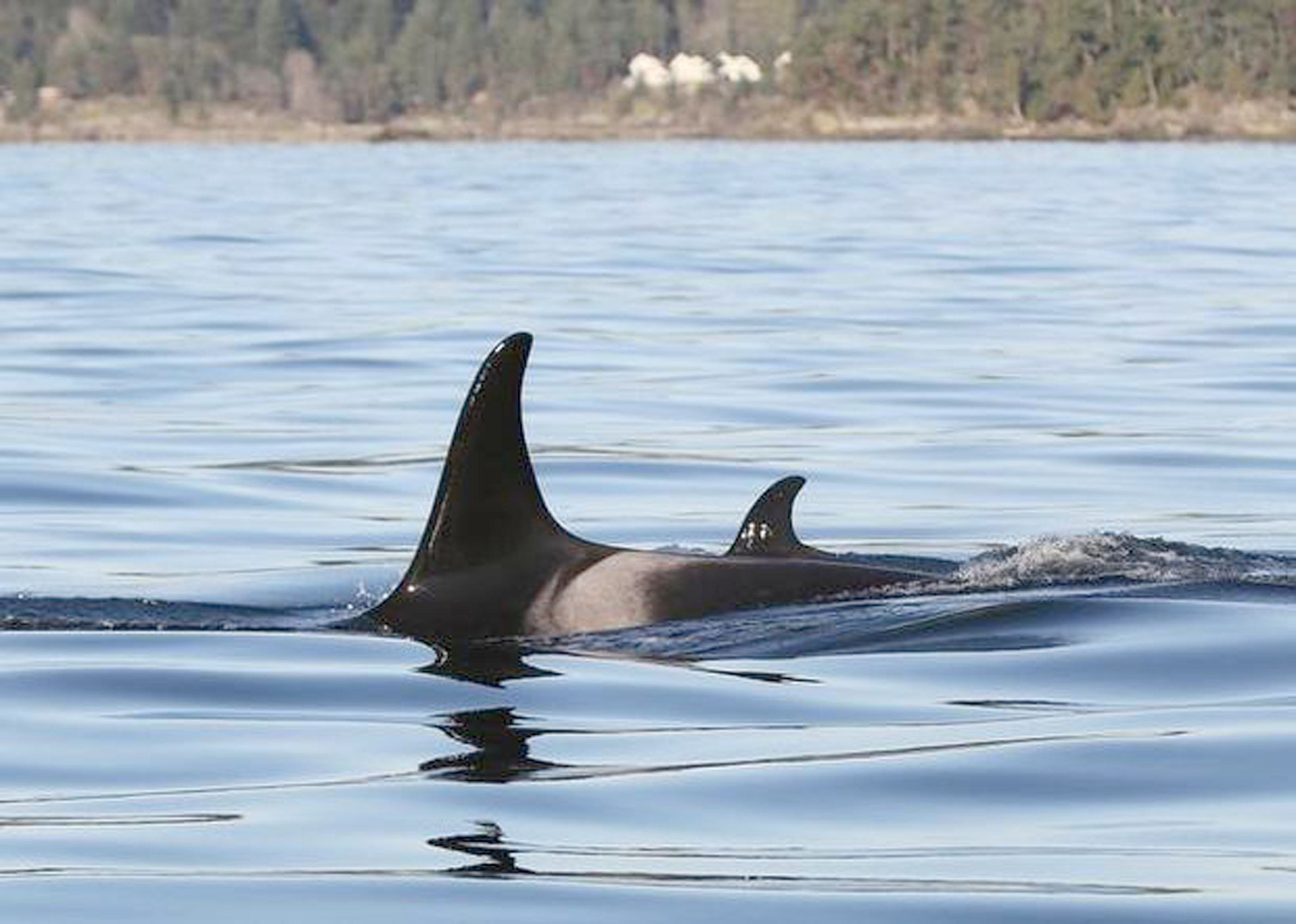Peninsula Daily News news sources
FRIDAY HARBOR — A newborn orca calf, seen in waters northeast of the Olympic Peninsula, is a surprise because of its mother’s age, according to the Center for Whale Research.
Orca J16, known as Slick, was seen with a new baby that is less than a week old.
The birth brings the number of the Salish Sea’s southern resident killer whales to 78.
“Good news for the end of 2014!” the center wrote this week on its Facebook page.
The calf was spotted by Ken Balcomb, a senior scientist with the whale center, off the southern shores of North Pender Island in Canadian waters. It looked healthy and energetic in its mother’s slipstream, he said.
The baby, now known as J50, is the newest member of the J-pod, part of an endangered population of killer whales.
The pod is one of three southern resident killer-whale families and the most likely to appear year-round in the waters of the San Juan Islands, according to the center.
J16 was born in 1972, making her 42; the oldest member of the pod is J2, known as Granny, who is estimated to be 103.
The calf is J16’s sixth baby, though two didn’t survive, according to Balcomb.
No female older than 42 has given birth in the four decades of demographic field studies, so J16 was not expected to be carrying a calf.
“This is pretty rare,” Balcomb said.
The news comes a few weeks after the death of J32, an 18-year-old orca known as Rhapsody, who was pregnant with a nearly full-term female calf. The calf also died.
“This is very good news in light of all the bad news in 2014,” Balcomb said.
An orca born in the L-pod in September was the first to be born in the Salish Sea since 2012, according to the center.
L120 was seen between two adult females about a mile from the southwestern side of San Juan Island.
The Salish Sea, officially adopted as a geographic name by both the U.S. and Canada in 2009, covers the straits of Juan de Fuca, Georgia, Rosario and Haro as well as Puget Sound.


